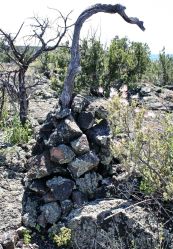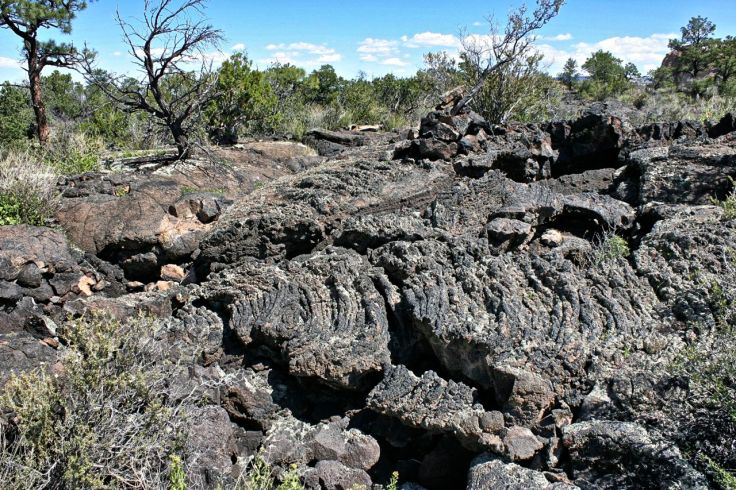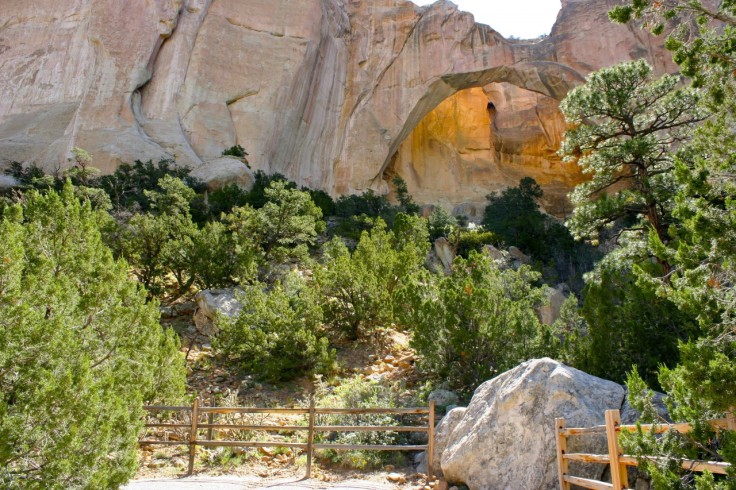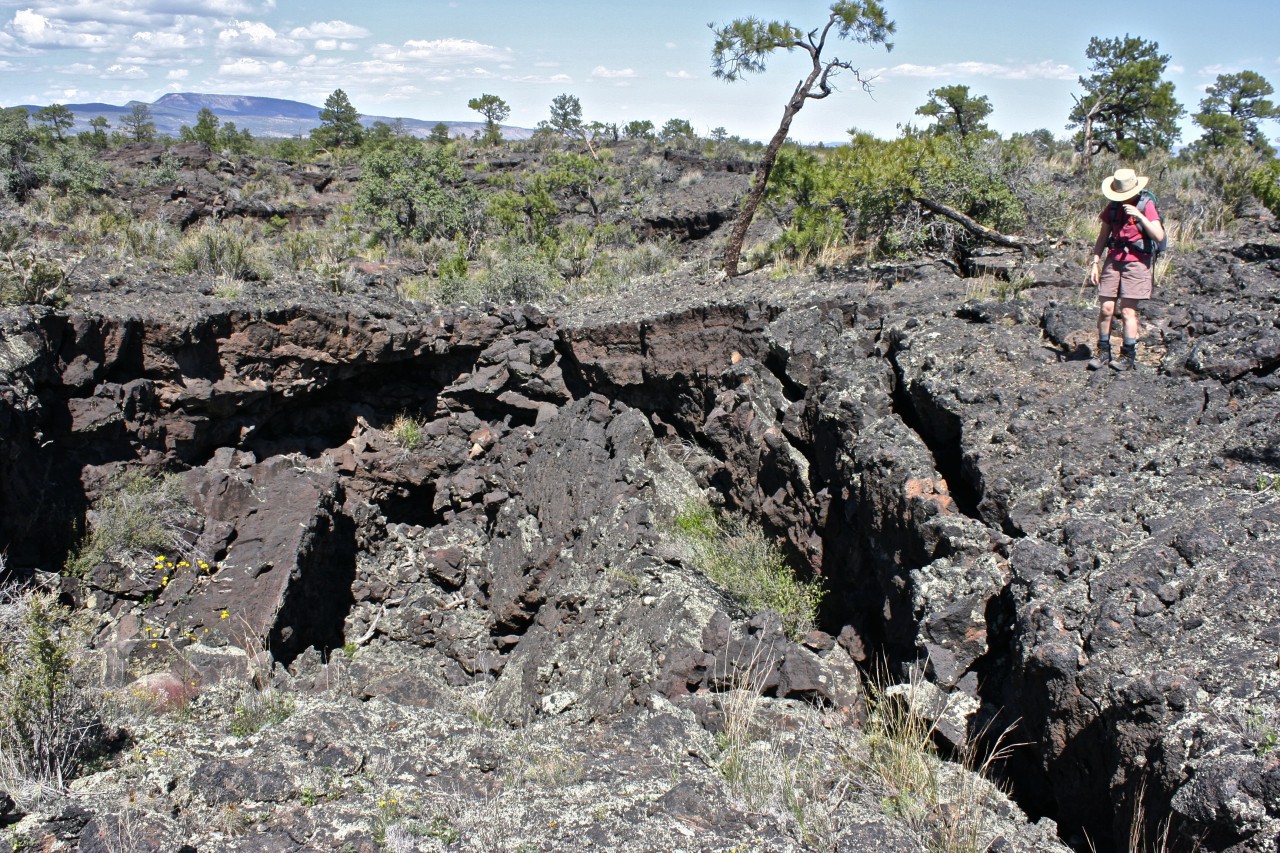 Lava, lava, everywhere. New Mexico might as well be called the Volcano State for all the young, exposed and hardened lava flows that are virtually everywhere. I had always thought that Oregon and Washington laid claim to the largest lava flows ever to have happened on the continent, but New Mexico is not lacking in that regard. One of the best ways to get a close look is the Acoma-Zuni Trail, part of El Malpais National Monument.
Lava, lava, everywhere. New Mexico might as well be called the Volcano State for all the young, exposed and hardened lava flows that are virtually everywhere. I had always thought that Oregon and Washington laid claim to the largest lava flows ever to have happened on the continent, but New Mexico is not lacking in that regard. One of the best ways to get a close look is the Acoma-Zuni Trail, part of El Malpais National Monument.
Hiking on the lava flows of Acoma-Zuni Trail is a formidable challenge. First of all, it’s a treacherous and strenuous walk over jagged lava rock. More importantly, over its 7.5-mile distance, you could easily get lost if not for the many cairns that have been erected over the landscape. It’s a wonder how ancient Puebloans navigated between Zuni and Acoma for over a thousand years. Aside from memorizing the landscape or using cairns, how did they do it without modern-day footwear? Our ambition today was to do a little exploring of the landscape, venturing only about a half mile in before returning to the parking spot. The trail is part of a vast volcanic field in New Mexico, formed over a period of 100,000 years. The trailheads are located along Highways 53 and 117 at either end. The latest eruption occurred only 3,000 years ago during what is called the McCartys lava flow, the youngest in the state. Much of the national monument and the conservation area around it showcase the volcanic field, including El Calderon, the monument’s most prominent cinder cone; rugged lava flows and tubes; and many other spatter and cinder cones, all surrounded by massive sandstone pillars and mesas.

From the eastern trailhead (Highway 117), the first half mile was quite easy—a sandy footpath past piñon pines. Eventually, we reached the rugged lava field, relatively young geologically speaking at 3,000 years old. Without our durable hiking boots, any other kind of footwear would have gotten shredded in no time. The terrain is very uneven, requiring much climbing up and down. Following park brochure advice, once we reached one cairn, we looked for the next before continuing on. The lava flows were very impressive, especially the pahoehoe kind with its ripply patterns.

After a certain point, we decided to go back and “retrace” our steps. This was harder than it sounds because nothing looked familiar. We just pointed ourselves in the opposite direction and eventually found the original dirt trail that led back to the car.
Not far from the Zuni-Acoma Trail stands the largest natural arch in New Mexico, La Ventana. A short trail leads up to this natural feature, but you can only look at it from a distance at trail’s end. In contrast to the young lava flows, the towering sandstone cliffs, of which La Ventana is a part, are 200 millions years old.


Leave a comment